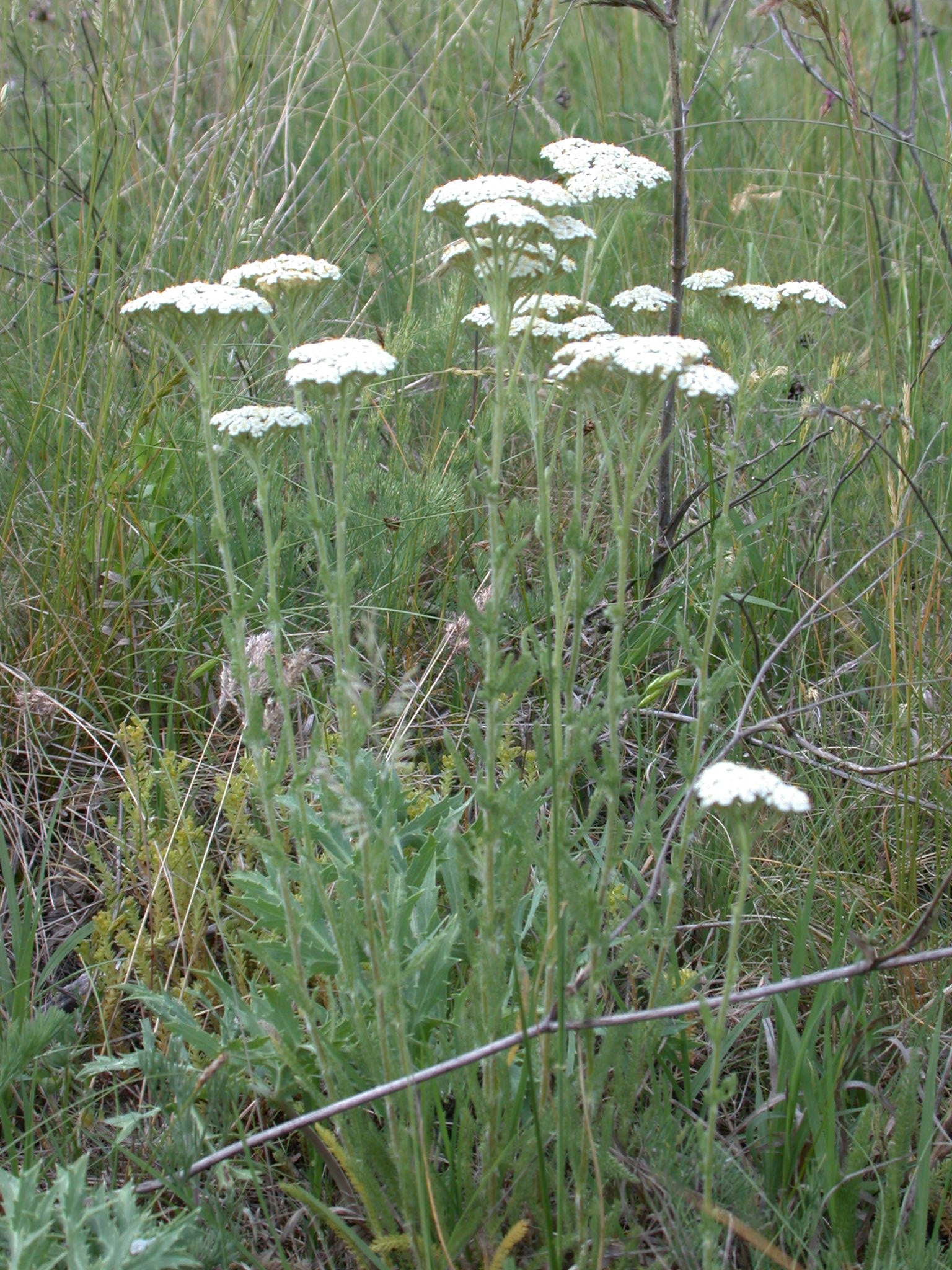Achillea collina Becker – Wild yarrow

Achillea collina is a perennial, herbaceous plant in the Asteraceae family/ Asteroideae subfamily (H). Yarrow’s rhizome is located underground, the stems are about 50-80 cm tall and they grow from the rhizomes. The feather-like leaves are located on the stems alternately. The inflorescences are composed from numerous, small florets, the corolla is white. Flowering time lasts from June to late autumn. The small, light brown achenes ripen in autumn, they don’t have topknot. Thousand seed weight: 0.13 g.
Yarrow is widespread in Central- and South Europe, East Asia and North Africa. In Hungary it is also native and common; appears at roadsides, ruderal and fallow places, sunny pastures. Yarrow is a xerophyte, halophyte species with wide ecological tolerance. Often occurs at saline areas, but prefers the warm, sunny places and loose soil types.
The official drug of the plant is the full or cut flowering shoot (Millefolii herba), which is mentioned by the Hungarian Pharmacopoeia VIII. and the ESCOP-monographs. In the practice, the inflorescences collected in full flowering with 4-5 cm long stems (Millefolii flos) are also used. The essential oil (Millefolii aetheroleum), distilled from the fresh plant, is in commercial trade, too. According to the standards of Ph. Hg. VIII. only A. millefolium should be collected, which is a non-azulenic species. To meet the standards (2 ml/kg 0.20 % essential oil and 0.02 % proazulene) other yarrow species from Millefolium aggregate, including A. collina, are collected for the high quality drug material.
The most important active ingredient of yarrow drug is essential oil, which is accumulated mainly in the inflorescences (0.2-0.5 %), the leaves contain lower amount. The main compounds of the oil are sesquiterpene lactones, called azulenes, which are transformed from proazulenes (achillin-, matricin-, artabsin derivates) during the distillation. The azulenic oil is dark-blue. Furthermore yarrow contains other non-volatile sesquiterpene bitter substances and flavonoids (apigenin- and luteolin glycosides).
The herb’s pharmacological effect is scientifically proved in several areas: digestive, spasmolytic, inflammatory, analgesic, antibacterial, and antiseptic. The infusion of the herb is indicated for curing the loss of appetite, gastritis, liver-, gall- and gastric-disorders and cramps. Externally, in form of sitting-bath, it is suggested for healing infections of female reproductive organs or in form of compress or ointments, indicated for curing skin inflammations and wounds. In some cases yarrow caused contact dermatitis at sensitive people.

